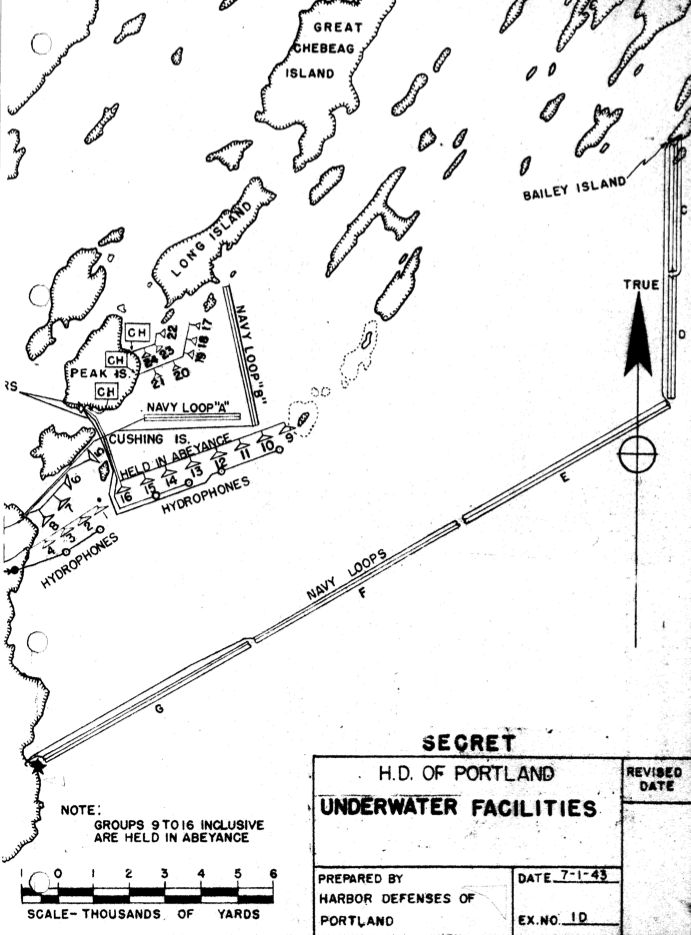Harbor Defense of Portland - WWII Underwater Defenses
| More information at Warlike, Wikidata, Wikipedia

During World War II Portland Harbor was protected by a series of underwater defenses that included controlled underwater mines, underwater hydrophones, and underwater magnetic loop detectors. Many of the small caliber defenses of Portland were focused on protecting the minefields from small fast minesweepers and motor torpedo boats. The minefield defenses included 3" gun batteries, 6" gun batteries, 90mm AMTB gun batteries, and portable searchlights. The Portland Harbor Mine Fields were made up of twenty-four groups of 19 mines each. Mine casemate #1 at Fort Williams (1) controlled mine groups 1 to 8 while mine casemate #2 at Peak's Island controlled mine groups 9 to 24. The hydrophones and magnetic loop detectors were generally positioned in front of the mine groups to detect approaching ships. Ship tracks were plotted in the plotting rooms of both mine casemate #1 and #2. Control of the minefields came from the two mine casemates under a group command. Arming and firing the mines was done in the respective mine casemates. The mine explosive storage facility was located in the abandoned Battery Weymouth and Battery Honeycutt magazines on Fort McKinley. Also located at Fort McKinley was a mine storage building, a mine cable tank, a mine loading room, and a mining wharf. Sources:
Fort Williams Facilities
Peak's Island MR Facilities
Fort Levett Facilities
Fort McKinley Facilities
|





